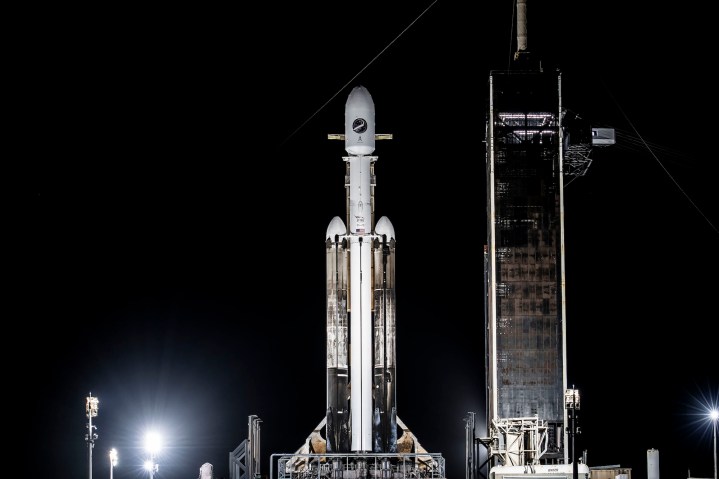
SpaceX has scrubbed Wednesday night’s launch of the triple-booster Falcon Heavy rocket, marking the fourth such delay in as many days.
In an earlier message, the commercial spaceflight company said that poor weather conditions at the launch site at the Kennedy Space Center in Florida meant that there was only a 40% chance of the rocket lifting off on Wednesday. But in a later message, it made no mention of this, saying only that it was scrubbing the launch and would use the delay to perform “additional system checkouts.”
It added that it was “keeping an eye on the weather” and will announce a new launch schedule once a decision has been made.
Targeted launches of the Falcon Heavy on Sunday, Monday, Tuesday, and Wednesday were called off for various reasons, including poor weather conditions and an unspecified “side issue” on the ground at the launch site.
The USSF-52 mission, when it finally gets underway, will carry the experimental X-37B space plane to orbit for the U.S. Space Force (USSF).
The crewless spacecraft looks like a smaller version of the now-decommissioned space shuttle, and has taken six previous flights since its first one in 2010.
The mission will involve various tests, including “operating the spaceplane in new orbital regimes, experimenting with future space domain awareness technologies, and investigating the radiation effects on materials provided by NASA,” according to the USSF.
Commenting on the upcoming mission, Lt. Col. Joseph Fritschen, the X-37B program director, said: “We are excited to expand the envelope of the reusable X-37B’s capabilities, using the flight-proven service module and Falcon Heavy rocket to fly multiple cutting-edge experiments for the Department of the Air Force and its partners.”
This will be the first time for SpaceX to deploy the space plane to orbit after the USSF previously used United Launch Alliance for the missions.
Unlike SpaceX’s workhorse Falcon 9 rocket, which has been launched more than 280 times on an array of missions, the Falcon Heavy has only flown seven times since its first mission in 2018. Its 5.5 million pounds of thrust at launch makes it one of the most powerful rockets in operation today. However, it’s considerably less powerful than SpaceX’s Starship vehicle — comprising the Super Heavy booster and Starship spacecraft — which packs around 17 million pounds of thrust. The Starship is still being tested and has only taken two flights to date, both of which were cut short by midair explosions.
SpaceX will live stream the Falcon Heavy’s launch, which will hopefully take place in the coming days. Here’s how to watch.
Editors’ Recommendations
Services Marketplace – Listings, Bookings & Reviews
